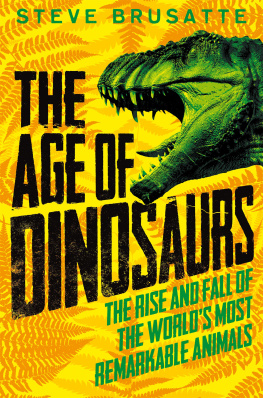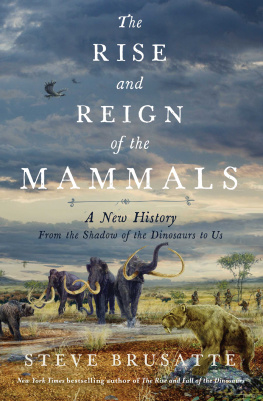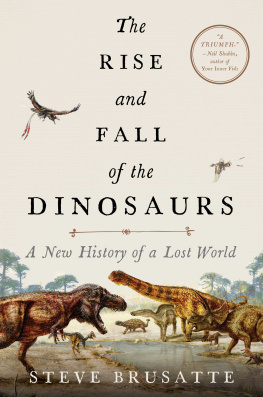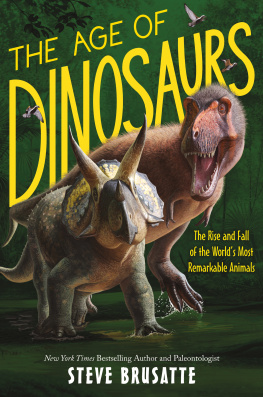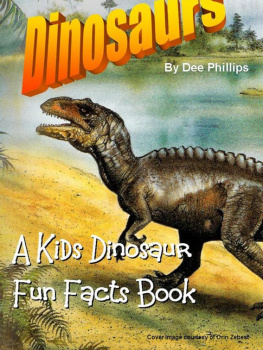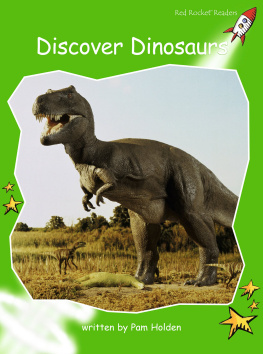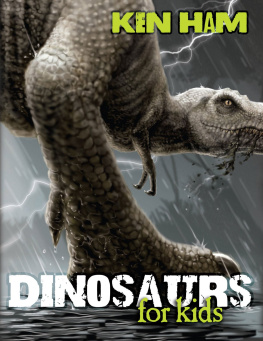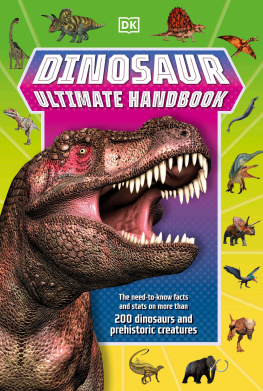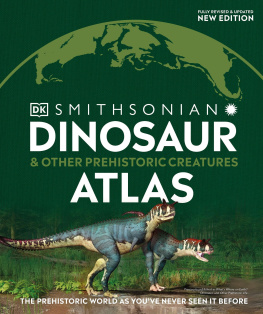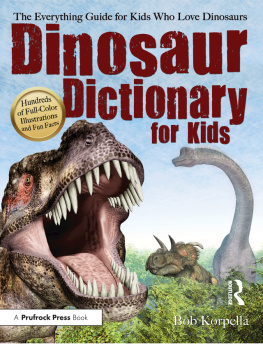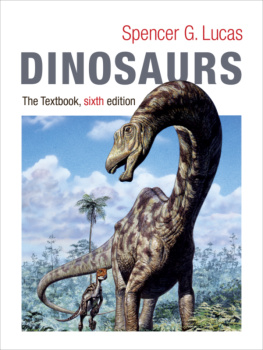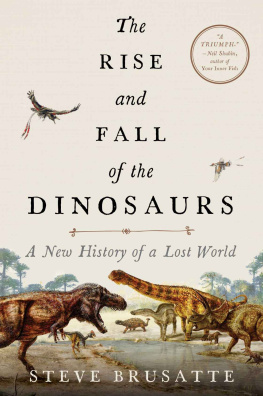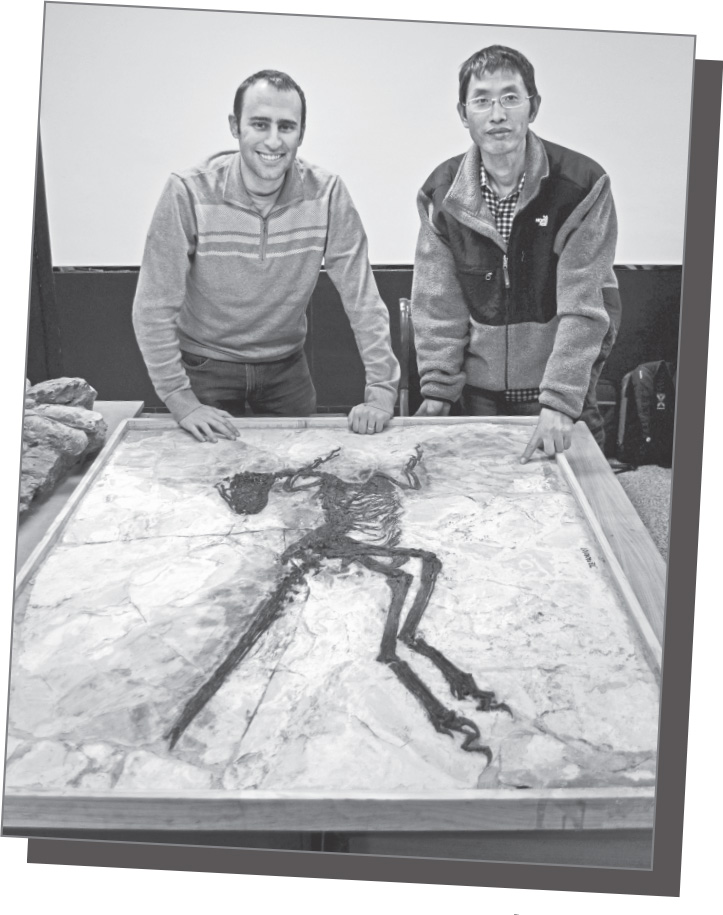To Ms Schultz, Mrs Roberts, Mrs Boam,
and all of my science teachers
and all of my teachers
at Wallace Grade School in Ottawa, Illinois.
Thanks for teaching me about the world
beyond the cornfields, and for reading all of
those stories and books I wrote...
BEING A PALEONTOLOGIST IS LIKE BEING A DETECTIVE.
With each new discovery, each new study,
we learn a little more about dinosaurs
and their incredible story
Steve Brusatte
Contents
Guide
Permian Period
299252 million years ago: Before the dinosaurs, when mammal ancestors and other reptiles and amphibians ruled the world
Triassic Period
252 million years ago: End-Permian mass extinction
250 million years ago: First fossils of the dinosaur lineage: Prorotodactylus tracks from Poland
230 million years ago: Oldest true dinosaurs: Herrerasaurus, Eoraptor, Eodromaeus, and other species from Ischigualasto, Argentina
215 million years ago: The first giant dinosaur: Ingentia from Argentina
212 million years ago: Dinosaurs remain rare and less successful than the pseudosuchians and giant salamanders, as shown by the Hayden Quarry fossils
201 million years ago: Pangea begins to split and the end-Triassic mass extinction occurs
Jurassic Period
200170 million years ago: Dinosaurs become larger, spread around the world, and become dominant
170 million years ago: Giant long-necked sauropods roam the lagoons of Skye, Scotland
170 million years ago: Tyrannosaurs originate as small, second-tier predators
156146 million years ago: Sauropods and Allosaurus dominate the Morrison Formation ecosystems
145 million years ago: The Jurassic Period ends as the climate and sea levels change
Cretaceous Period
14594 million years ago: Sauropods begin to decline and are replaced by smaller plant-eating dinosaurs, and carcharodontosaurs are the top predators around the world
125 million years ago: Feathered dinosaurs thriving in China
10095 million years ago: Carcharodontosaurus rules Africa
9290 million years ago: Tyrannosaurs like Timurlengia evolve big brains and keen senses while still no larger than horses
84 million years ago: Tyrannosaurs evolve giant body sizes
6866 million years ago: T. rex and Triceratops rule North America, tyrannosaurs and hadrosaurs live in Asia, giant titanosaurs and abelisaurids thrive in the southern continents, and dwarf dinosaurs live in Europe
Paleo g ene Period
6623 million years ago: Mammals and birds prosper after the non-bird dinosaurs go extinct
Introduction
A few years ago, on a cold November morning, I got out of a taxi and entered the railway station in Beijing, the capital city of China. The station was packed with people on their way to work. I was there for work too. I am a paleontologist, a scientist who studies fossils the remains of ancient plants and animals so I can understand what Earth was like millions of years ago, long before humans were alive. I had travelled to China from my home in Scotland to see a secret new fossil the skeleton of a dinosaur! that had just been discovered by a farmer.
I met my friend Junchang L, who had invited me to come to China and help him study this new mystery dinosaur. I was still a young scientist. Only a couple of years earlier, I had finished my PhD degree. Junchang, however, was a famous professor. He had discovered and named dozens of new dinosaur species, and he was often on television. Junchang and I had worked together many times, studying many dinosaurs.
We need to go now! Junchang yelled to me as he pointed to a train behind him, which was starting up its engines.
We both ran on to the train, and for the next four hours, we crawled past concrete factories and hazy cornfields in the countryside of China. Occasionally I nodded off, but I couldnt sleep much. I was far too excited! I had seen a few photos of the mystery dinosaur, and I knew it would be special.
Finally, the train stopped at our destination: the city of Jinzhou, in the Liaoning province at the far northeastern corner of China.
Junchang and I were met by a group of local citizens, who immediately took us to the citys museum, a plain building on the edge of town. It all felt very thrilling, like we were part of a secret undercover mission. And in a sense, we were: nobody except for us, and the farmer, knew about this dinosaur skeleton. Inside the museum, there was a 125-million-year-old fossil, and we would be the first people to ever study it.
Once through the museum doors, we were led down a long hallway with flickering neon lights, and then into a side room with a couple of desks and chairs. A slab of rock was balanced on a small table, so heavy that it looked like the table might collapse. One of the locals spoke in Chinese to Junchang, who then turned to me and gave a quick nod.
Lets go, he said.
The two of us stepped towards the table and approached the treasure.
I was astonished. In front of me was one of the most beautiful fossils I had ever seen. The skeleton was about the size of a mule, with chocolate-brown bones standing out from the dull grey rock surrounding it. It was a dinosaur for sure. Its steak-knife-sharp teeth, pointy claws, and long tail immediately showed that it was a close cousin of Velociraptor, the villain from Jurassic Park.
Junchang L and Steve Brusatte studying the fossil of Zhenyuanlong.
But this was no ordinary dinosaur. Its bones were light and hollow, and its legs long and skinny. Its slender skeleton clearly belonged to an active, fast-moving animal. And not only were there bones, but there were feathers covering the entire body. Bushy feathers that looked like hair on the head and neck, long branching feathers on the tail, and big quills on the arms, lined together and layered over each other to form wings.
This dinosaur looked just like a bird!
About a year later, Junchang and I described this skeleton as a new species, which we called Zhenyuanlong.
It is one of about fifteen new dinosaurs that Ive identified over the past decade, as Ive enjoyed a career that has taken me from my roots in the American Midwest to my job teaching at the University of Edinburgh in Scotland, with many stops all over the world to find and study dinosaurs.
Zhenyuanlong is unlike the dinosaurs I learned about in primary school. I was taught that dinosaurs were big, scale-covered, stupid animals that lived in an ancient world that was totally different from todays Earth. The books I read when I was young often called dinosaurs failures, because they died out or went extinct. Many people told me that dinosaurs were not important to learn about, and that studying them was a waste of time.

